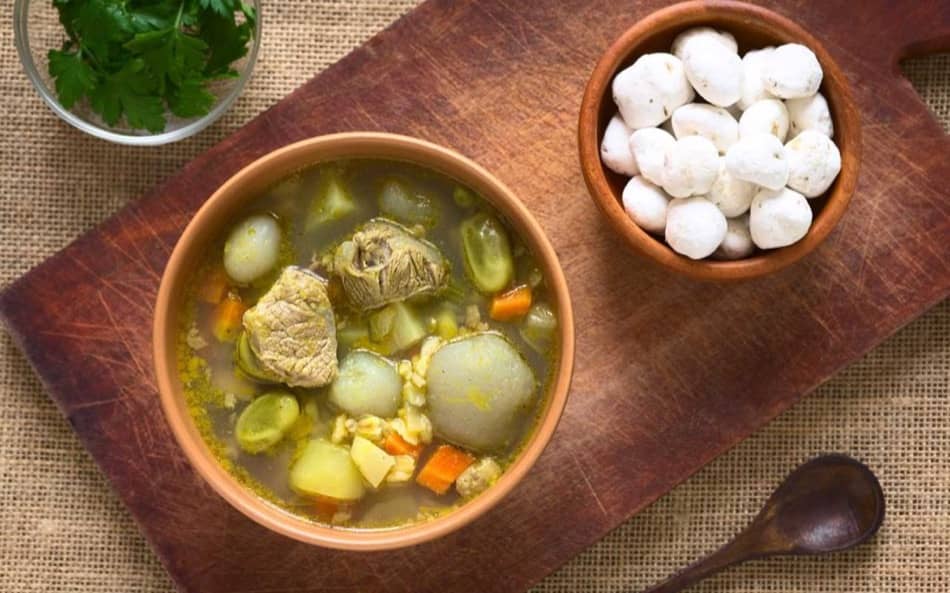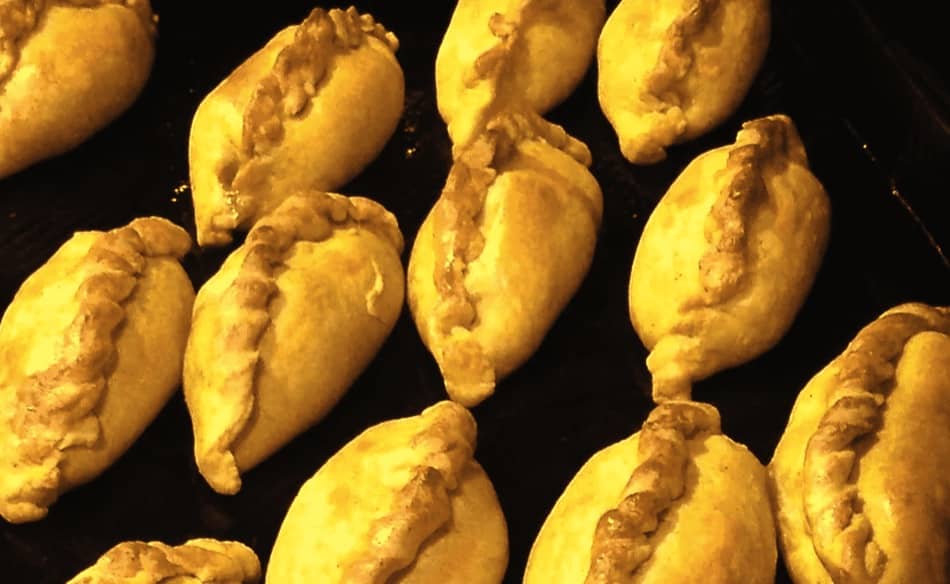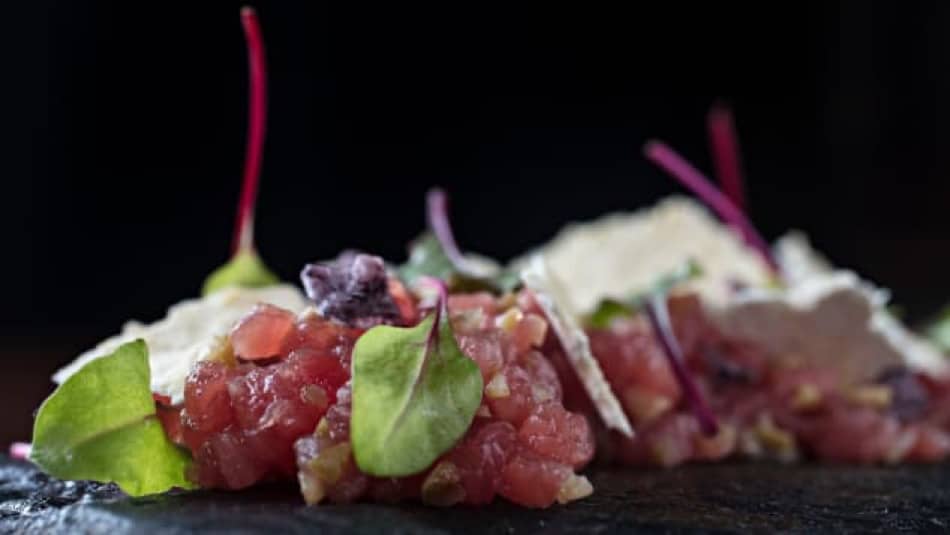Though strongly rooted in the ancient Andean tradition of cooking, Bolivian food today showcases inspiration from multiple countries and cultures.
Bolivian food uses the same ingredients that Bolivians have used for cooking for centuries, such as potatoes, maize, quinoa, beans, and meat. Over the years, multicultural influences have contributed to a flavor profile that is unique to Bolivia and cannot be found anywhere else in the world.

Though much of Bolivian food is inspired by other countries, such as Spain and Peru, Bolivia boasts a vast number of original dishes stemming from its Andean heritage that vary in ingredients, serving temperature, and heartiness according to their particular geographical origin.
Today, travellers can experience Bolivia’s culinary offerings at virtually any price or sophistication level, from a $1 street market meal in Tupiza to a seven-course tasting menu at Gustu in La Paz.
This article will provide an overview of the food scene in Bolivia and the places and dishes worth seeking out on your trip.
Contents
Bolivia’s Culinary Background
Once part of the Incan empire, then colonized by Spain, and continuously sharing highly traversed borders with Argentina, Chile, and Peru, it can be difficult to unravel true Bolivian food from that of its influencers.
Indeed, of important note is that Bolivia does not have any direct access to the ocean, so unless they trade with their neighbors its people must subsist entirely on what can be grown on their own land. (Fishing is possible in Lake Titicaca)
Thus, Bolivian cuisine relies highly on crops it can cultivate itself. This means that most dishes in Bolivia are based around potatoes, quinoa, rice, maize, corn, beans, and other fruits and vegetables that can prosper in its land. This makes Bolivian food healthy.
Today, this food independence is still very active in the mindset of Bolivian society. Anecdotally, restaurant franchises have a difficult time surviving in the country because the Bolivian people and travellers alike have such great access to affordable meat and produce from their markets and local restaurants that they have no reason to buy from anywhere else.
This self-sustaining drive has made food incredibly inexpensive for travellers, which gives those visiting the opportunity to try dishes and flavors they may be able to afford in a different country.
Key Food Regions
Since you can basically afford to try whatever you want, you will first want to narrow down the food profile you are most interested in. This will help determine where you want to head on your trip, as for a true taste of Bolivian food you should really try to get it from the place where it originated.
The kinds of products that feature in dishes across Bolivia are determined by the geographic origin of the dish and what can be produced there. Since Bolivia’s topography ranges from snowy mountain ranges to the jungles near the Amazon, food cooked in these areas will vary accordingly.
As for the presence of meat and fish in dishes, this depends on location as well. The closer you are to the Andes Mountains, the more beef and pork you will encounter on the menu. But as you venture eastwards and towards the lower Amazon region, you will find more vegetable-centric dishes available.
For example, food that is native to the Altiplano, which is close to the Andes, features a lot of spice and warm meat to combat the cold, but food prepared in the Lowlands, closer to the Amazon Rainforest, is heavier on vegetables, yucca, fish, and fruit.
A sampling of foods native to the main regions of Bolivia and the most common places you can expect to find them is provided below.

Altiplano, or Andean Highlands
Anticuchos
Most traditionally featuring the heart meat of cows, Anticuchos are kebabs of grilled meat and potatoes or bread tossed in a spicy sauce made from peanut, garlic, or peppers. These popular snacks date back to before Columbus and have been traced to the Incan Empire, when people used llamas for meat instead of cows.
Today, they are prepared directly on the grill at street markets to be purchased by passersby looking for an easy, transportable snack. They may also be found outside of bars and clubs at closing time, ready to tempt partygoers after a long night of drinking.
Papa Rellenas
Originally hailing from Peru, this dish is prepared by rolling mashed potatoes around a choice of fillings and then battered and deep-fried. While preparation can vary, filling ingredients typically consist of eggs, cheese, or beef. True to the dish’s spice-centric Andean roots, the batter may be flavored with multiple spices such as cumin, paprika, pepper, cilantro, and parsley.
The finished potatoes are typically served with a creole sauce that is equally as spiced as the main dish; some even double up and add an additional hot sauce.
Papa Rellenas are widely available as a street food not only in their home of the Andes but all over the country.
Saltenas
When you think of Bolivian breakfast, this should be it. It is rumored, quite universally, that this dish was originally created by a women from the Argentinian town of Salta. As Saltenas was the name these women were referred to by, the name stuck to the culinary contribution.
Saltenas are oven-baked pastries stuffed with meat and/or vegetables, and may be served with a spicy-sweet sauce or filled with a similar broth. Because of their size and self-contained structure, they are popular as handy snack as well.
Though they did originate in Argentina, food critics all over the web rank restaurants in Bolivia as the best place to eat them. When in La Paz, head to Pacena La Saltena or El Hornito; in Sucre, Saltenaria El Patio; and in Cochabamba,Los Castores Cochabamba. They are also widely available to purchase at street markets.

Api Morado
Not a food, but a drink, this purple beverage is popular on cold mornings in the Andean highlands. To make it, you first soak purple cornmeal in water until it forms a paste. Then you start mixing in the spices: cinnamon and cloves. Add sugar and it is ready to be enjoyed just as the indigenous people of this region did years ago.
If you aren’t up for the cold mountain mornings, you can sample Api Morado at street markets in the towns of the highlands; some cafes there are open solely to sell the drink and its popular paired snack, buñelos.
Lowlands
Zonzo Typical of the non-meat centric culinary style of Eastern Bolivia is Zonzo, a pancake-like dish made from cheese and yucca. The pancakes may be prepared by frying, grilling, or baking in the oven, and are sometimes served wrapped around a wooden stick. They are usually eaten by locals as an afternoon snack alongside a cup of tea, or as breakfast with coffee.
You can find Zonzo sold as a street food in Santa Cruz de la Sierra or almost any other city, as well as at corner stores.
Pan de Arroz
Originating in the Santa Cruz department of Bolivia, Pan de Arroz is a bread made from cheese, rice flour, and tapioca or cassava. The bread is traditionally wrapped in a banana leaf for baking.
Authentic pan de Arroz can be found in pastry shops such as La Pascana in Santa Cruz de la Sierra.
Majadito de charque
Majadito de charque is another dish that comes from the department of Santa Cruz, in particular its capital of Santa Cruz de la Sierra. The main ingredients are jerk meat, typically beef, and rice. For flavor and alleged medicinal properties, urucú, or achiote, is added, which also provides a reddish-orange hue to the dish. Plantains, egg, and yucca are the traditional sides.
To taste majadito de charque yourself, critics and travellers rate Casa del Camba, in Santa Cruz de la Sierra, as the best restaurant in Bolivia that serves it.
Traditional Foods Not to Miss
While you could truly get lost in the lists of foods and snacks recommended by Bolivian travellers, some dishes pop up more than others in terms of authenticity and popularity among locals.
Below is a list of some of Bolivia’s more traditional foods identified by their place of origin, as well as the best places all over the country to find them according to critics and travellers who have sampled them.
Cochabamba
Silpancho
Popularly dubbed Bolivia’s culinary capital, Cochabamba is credited as the birthplace of many of Bolivia’s most popular and best-known foods. One of the foods we can thank Cochabamba for is Silpancho, a dish composed of three of Bolivia’s staple ingredients: meat, rice, and potatoes. This hearty foundation is then topped with an egg, onions, tomato, and parsley. As it originates in Cochabamba, this is the city where it is recommended that you try it.
While you can find it in almost any restaurant in Cochabamba, recommended places are El Palacio del Silpancho, Sillpancheria Dona Celia, and D K’ffe. If you can’t make it to Cochabamba, you can also hit up Café Pub 4.060 in Potosi for an equally highly recommended version.
Pique Macho
Another dish hailing from Cochabamba is Pique Macho, which consists of a large plate of French fries topped with meat such as beef and/or sausage, boiled egg, cheese, peppers (specifically a kind of chili pepper called locoto), and onions.
This dish, and its name, comes with quite a backstory. Legend has it that the first Pique Macho was essentially created by accident at a Cochabamba restaurant called Miraflores, when the owner and his wife were surprised by unwelcome visitors demanding food late at night. The wife supposedly tossed everything she had into the frying pan, along with a health dose of locoto, and challenged the visitors to finish the whole meal to prove their masculinity. Which they did, and thus Pique Macho was born.
Cochabamba and Sucre are regarded as the best places to sample this item. In Cochabamba you can head to its home restaurant, Quinta Miraflores, or you can try La Casa del Gordo, Casa de Campo, or Savarin. If you are in Sucre, it is recommended that you order it at Café Restaurant Florin.
Chicharron
Considered a snack rather than a full meal, chicharron is a popular indulgence all over Central and South America that, at least in Bolivia’s case, can be credited to Cochabamba. Chicharron can be made from pork ribs, belly, or skin, all that matters is that the meat has been fried down until it is crispy and light. Bolivian traditions pairs this main snack with fried yucca or plantains, potatoes, tomato salsa, and mote (Andean corn kernels).
A great place to try traditional chicharron in its place of origin is Chicharrones Dona Pola, located in Cochabamba.
Sucre
Mondongo
When in Sucre you must try Mondongo, the city’s most typical dish. Mondongo is a pork stew featuring a heap of chicharron or pork ribs cooked in spices and peppers. The pork meat is served corn and potatoes, and topped with a red chili sauce. Traditionally, it is served on All Saints day, though you can find it at any time of the year. It is notably consumed largely on weekends, as it is regarded as an ideal hangover cure.
Travellers recommend your first taste of Mondongo to be at El Huerto in Sucre, which features a sunny patio and specializes in traditional Bolivian main courses.
La Paz
Sanduíche de Chola
Named after the indigenous women who sell them, Sanduíche de Chola is a quintessential Bolivian sandwich typically served in the La Paz street markets. The central ingredient is pork that has been slow-roasted until it becomes crispy. The meat is then topped with an assortment of pickled vegetables, salsa or chili, and hot sauce. Everything is piled on a round bun and served.
Critics suggest grabbing a Sanduíche de Chola at the aptly named Las Cholas, located in La Paz. Las Cholas is actually a park rather than a restaurant, and travellers recommended checking it out not only for the sandwich, but as a small escape from downtown to enjoy a cold beer and the sunshine.
Nationwide
Arroz con queso
Though more of a side than a full meal, Arroz con queso, or rice with cheese, is a traditional food of Eastern Bolivia. It is typically made with Arborio rice and a white, semi-firm cheese, and is usually served alongside a grilled meat, like churrasco. This dish can be found almost anywhere in Bolivia as it is very popular in the country, as well as in South America as a whole.
While you may be included to pass this up as it seems too similar to the more familiar Italian risotto, the prevalence of this dish should convince you of its importance to the Bolivian culinary experience; plus, who doesn’t like a rich, creamy, cheesy addition to their meal?
Places recommended for your taste of Arroz con queso are La Estancia in Cochabamba, and Casa del Camba in Santa Cruz de la Sierra.
Buñelos
These fried dough snacks are a remnant of Spain’s influence on Bolivian cuisine. They can be made sweet or savory, and may be filled with cheese. Depending on the preparation they may more resemble donuts or fritters. Sweet buñelos are traditionally eaten on Christmas morning alongside syrup and hot chocolate. They may also be served with Api, a drink made of purple corn, cinnamon, and lemon.
You can purchase buñelos as a street food in markets in almost any city, especially in Cochabamba and the highlands, where you can enjoy them with the traditionally paired Api.

How Much Does Food Cost in Bolivia?
Travellers report that food as a whole is not expensive in Bolivia, but of course prices will vary depending on in what city and in what kind of atmosphere you choose to visit.
If you want to sample as much as you can without emptying your wallet, purchasing your meals at street markets is probably the best way to go, with meals in small cities like Tupiza starting at less $1 a pop.
But if you are craving a once-in-a-lifetime dining experience and money is no object, you may want to set your sights on the big cities like La Paz, Sucre, and Santa Cruz de la Sierre, which offer world-class meals in elegant settings.
Below is a quick synopsis of what you can expect from these two extremes, and afterward is a list of restaurants to satisfy those who are looking for the comfort of a restaurant without the 5-star price tag.
Mercados
Mercados, or markets, are unanimously the cheapest way to eat in Bolivia, and sometimes even the best. At a typical mercado you will find vendors selling fruits, vegetables, and meat just as any other farmer’s market would.
But a special perk of Bolivia’s food mercados is the equal presence of food halls. Just as in the US, these popular food halls are made up of stalls and cafes offering fresh, local, and completely homemade meals.
Travellers on a budget, and even those not watching their cash, love to sample dishes at these markets. Not only are meals less expensive, even downright cheap, compared to any nearby restaurant, but eating at an intimate food hall cafe gives you the opportunity to chat with the cooks themselves and get a true local’s insight into the town, its residents, and the food they devote their livelihoods to.
Some of the most raved-about mercados and their locations are listed below, along with a sample of their offerings and what you can expect in terms of a meal.
- Mercado Lanza, La Paz, Bolivia. This four-story market has room for up to 1000 vendors and offers clothes, jewelry, books, flowers, and food. You can purchase a full meal, sandwich, salad, ice cream, and various other food items there for less than $1.00
- Mercado Central, Sucre, Bolivia. This is Sucre’s main farmer’s market and offers the cheapest prices for produce and household items. The top floor is reserved for serving hot, traditional Bolivian meals, and on the bottom floor you can find fresh juices and fruit salads for $1.00
- Mercado Nuevo, Santa Cruz de la Sierra, Bolivia. With food stalls run by the same family for generations, Mercado Nuevo offers a traditional food experience. Travellers rate this as a great place to stop for a cheap lunch and relish in the history of the city.
- Mercado Central, Tupiza, Bolivia. Spanning a few blocks of the small town of Tupiza, in addition to a food hall this market features produce, electronics, food, and household items. Travellers report spending $0.90 on a filling meal.
Although not for food, don’t forget to visit the Witches’ Market in La Paz.
High-End Restaurants
Gustu, La Paz, Calle 10 300, Esq. Av. Costanera, Calacoto
Appearing on almost every list of the best restaurants in South and even Latin America, Gustu is run by the world-renowned chef Claus Meyer, who owns the famous Noma restaurant in Copenhagan, Denmark. It features exclusively local ingredients, including wine.
For your meal, you can order off of the menu or you can opt for a five, seven, or 15-course tasting menu. Prices will ranges from about $19 per person if you only go for a main dish, to over $100 per person if you choose a paired tasting menu.
When you are considering the value of the price though, you should know that part of the proceeds will straight back into the Bolivian community via Meyer’s Melting Pot Foundation, which benefits poor and vulnerable Bolivians by teaching them culinary skills.
Restaurant Chalet La Suisse Santa Cruz, Santa Cruz de la Sierra, Calle Los Gomeros No.98, Barrio Sirari
First having opened a location 31 years ago in La Paz, Chef Markus Ruegg brought Swiss cuisine to Santa Cruz de la Sierra in 1998 with his Restaurant Chalet La Suisse Santa Cruz. The menu features seafood, beef, lamb, pork, and vegetarian dishes cooked in the Swiss tradition and stylishly plated.
The restaurant has received rave reviews across travel sites and offers travellers a taste of European luxury for a special night out.
Prices are not extremely high considering the restaurants reviews and rating, with entrees starting at $10 per plate.
Nativa, Sucre, Calle La Paz 737 Proyecto Nativa at Kachi Lodge, Uyuni, Uyuni salt flats, Jirira community
Like Gustu, Sucre’s fine dining restaurant pays homage to Bolivia’s fertile lands. The chefs of Nativa bring techniques from all over the world to Bolivian ingredients, resulting in a fusion menu that maintains the essence of its parts.
In 2020, the chefs of Nativa opened a sister restaurant in Uyuni, Proyecto Nativa, with the same ideals of elevating Bolivian cuisine.
Both restaurants feature tasting menus that change almost daily to ensure freshness, as well as local wines from Tariji. Prices are reported to be about $80 to $100 per person.
Notable Restaurants
If you’re looking for something not quite as rustic as the mercados and not as bank-breaking as Gustu, a list of restaurants in various cities that have been highly recommended by travellers is below.
Condor Café, Sucre, 102 Calvo Street
A rare entirely vegetarian option, Condor Café is located one block from Sucre’s main plaza and is very highly rated on travel sites. Open until midnight every day of the week, this is a great place to stop by for an inexpensive bite at any time of day in a cozy setting.
In addition to what you would expect a restaurant to provide, the café works with a group called the Condor Trekkers that offers tours and hikes around the city and its surroundings. Money from the restaurant and the tours is put directly back into the community to help raise up its impoverished citizens.
Luciernagas Restaurant, La Paz, Ave Illimani 1658-1696
Centrally located to just about everything in La Paz, this restaurant serves Latin and South American cuisine in reportedly very large portions. For atmosphere, the entrance to the restaurant takes you up a stone staircase and you can expect to dine on colorful tablecloths that are more like tapestries.
Travellers give rave reviews to not only the food but the hosts, setting, and price, noting that a full meal, complete with wine, cost less than $25.
Ali, Copacabana, Av 6 de Agosto esquina
For those wanting to try something a bit off of the beaten path, an affordable and well-reviewed restaurant worth making a trip for is Ali. Though advertised across travel sites as Italian, don’t expect your typical spaghetti and meatballs here. The restaurant features unique dishes such as trout lasagna, alpaca with Roquefort sauce, and quinoa cheesecake.
Portions are reportedly huge and prices are low.
Ready to Take a Bite
Despite its colonial history and close proximity to neighboring countries, Bolivians have developed a flavor that is truly their own. And due to their self-sustaining drive, Bolivians have ensured that both locals and travellers alike are able to afford and partake in their culinary culture.
No matter if you are trying to eat on budget, be pampered, or try something completely wild and new, you will be able to find the perfect food and setting for your ideal dining experience during your trip to Bolivia.


























